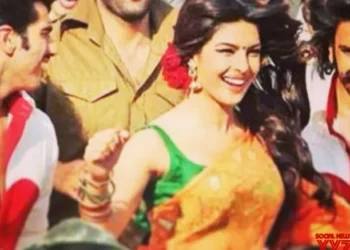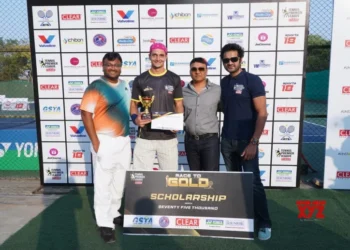From an old shikara driver in Kashmir’s serene Dal lake humming an old Hindi song to the labyrinths of a small town where Hindi numbers are playing on loudspeakers, sometimes one gets a sense that India moves on songs.
When the Ministry of External Affairs asked documentary filmmaker Yasmin Kidwai to make a film on the ‘idea’ of India, it got her thinking — how can something so complex and layered be encapsulated into a docu-movie?
What followed were intense brainstorming sessions with her team. Can the idea be about food, commonality of places of worship (dargahs), or drapes?
In one of the discussions, she talked at length about how Bollywood captures India in its true essence, Amitabh Bachchan goes to Haji Ali, no one is bothered about caste or religion but only talent, etc. And that was it.
“I didn’t even realise that I was giving examples from films and it was Bollywood that fit our bill completely, and that is how ‘Filmisthaan’ was born,” Kidwai told IANS.
The filmmaker has been making documentaries on diverse issues for the past two decades now, with her last being ‘No Problem (Six Months with the Barefoot Grandmamas)’, which revolved around the solar electrification project run by the Barefoot College in Tilonia, a small village in Rajasthan.
Numerous illiterate rural women from all over the world, particularly Africa, were trained to be solar engineers. Through the stories of these women, a fascinating tale of sustainability, demystification of technology, and social inclusion unfolds.
The film follows the story of the 2011 batch of African students as they live and learn together for six months, without even knowing each other’s languages, in pursuit of a single dream — becoming solar engineers.
“The latest one is about capturing the ‘idea’, therefore more complex. Shot across India, from Srinagar to Kolkata, in small towns and big film studios in Mumbai, ‘Filmisthaan’ captures the spirit, the magic and the madness of a unique industry. It is a provocative glimpse into the medium that weaves dreams for millions worldwide,” the director said.
The documentary features interviews with Bollywood icons like Shah Rukh Khan, Amitabh Bachchan, Saif Ali Khan, Aishwarya Rai, Sonam Kapoor, Abhishek Bachchan, Shyam Benegal, and Javed Akhtar, besides Priyanka Chopra Jonas.
Additionally, viewers will also hear from film stars such as the late Irrfan Khan, Sonam Kapoor, Jackie Shroff, Javed Jaffrey, Jacqueline Fernandez, Taapsee Pannu and John Abraham. For someone who made India’s first and only film on Polo, titled ‘Chakkar’ through corporate funding, she does not like the idea of being slotted in a category as a filmmaker.
She further mentioned, “Just because I made several films on the elderly, people started assuming that that was my area of interest. When I did a series on vanishing food trends, everybody thought that grub was my thing. And neither would I like to be termed as someone who works on social issues. I like my work to be diverse.”
Talk to her about what fascinates her about the documentary genre and she asserts, “You know, I think it’s stories. Not to mention the different facets of people you encounter while shooting. Also, when one makes a documentary, the journey is rudderless, you never know what you will encounter as there is no bound script. There is improvisation on the move, something I have always loved. Besides, it promises some kind of impact. Ask any documentary filmmaker who started 20 years back, and she/he will tell you, there was no money to be made in this field.”
The film which has already been screened twice in Italy and Delhi will now be shown in different parts of the country.
“I want to dedicate my next two months to that. Also, we have made another film called ‘The Sticky Wicket’.”
Considering the dismal state of documentary distribution in India, and even with Doordarshan not showing them enough, Kidwai does not have her hopes pinned on OTT.
She added, “We were pretty excited when they entered India, but soon realised that even when it comes to documentaries, they prefer sensational themes — that is where the money is for them.”






















